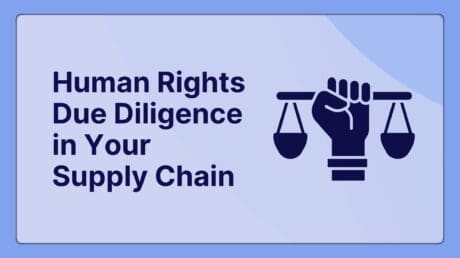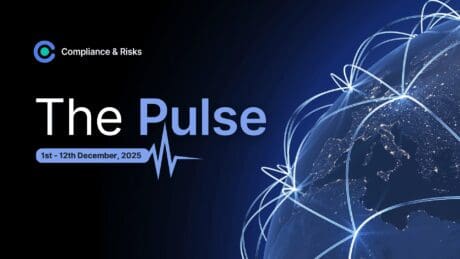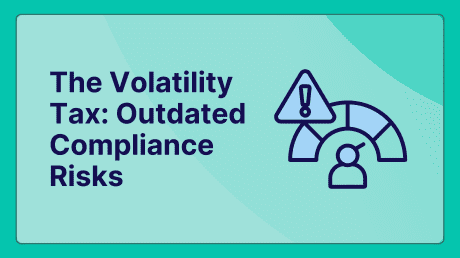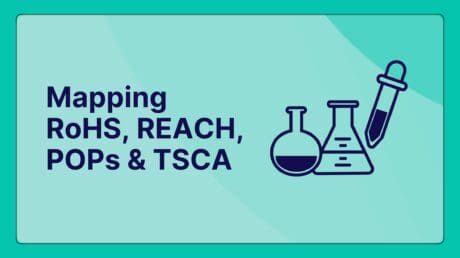
The Biweekly Pulse: 30th June – 11th July – US State PFAS Requirements, ESRS Exposure Draft and Packaging Labeling Updates
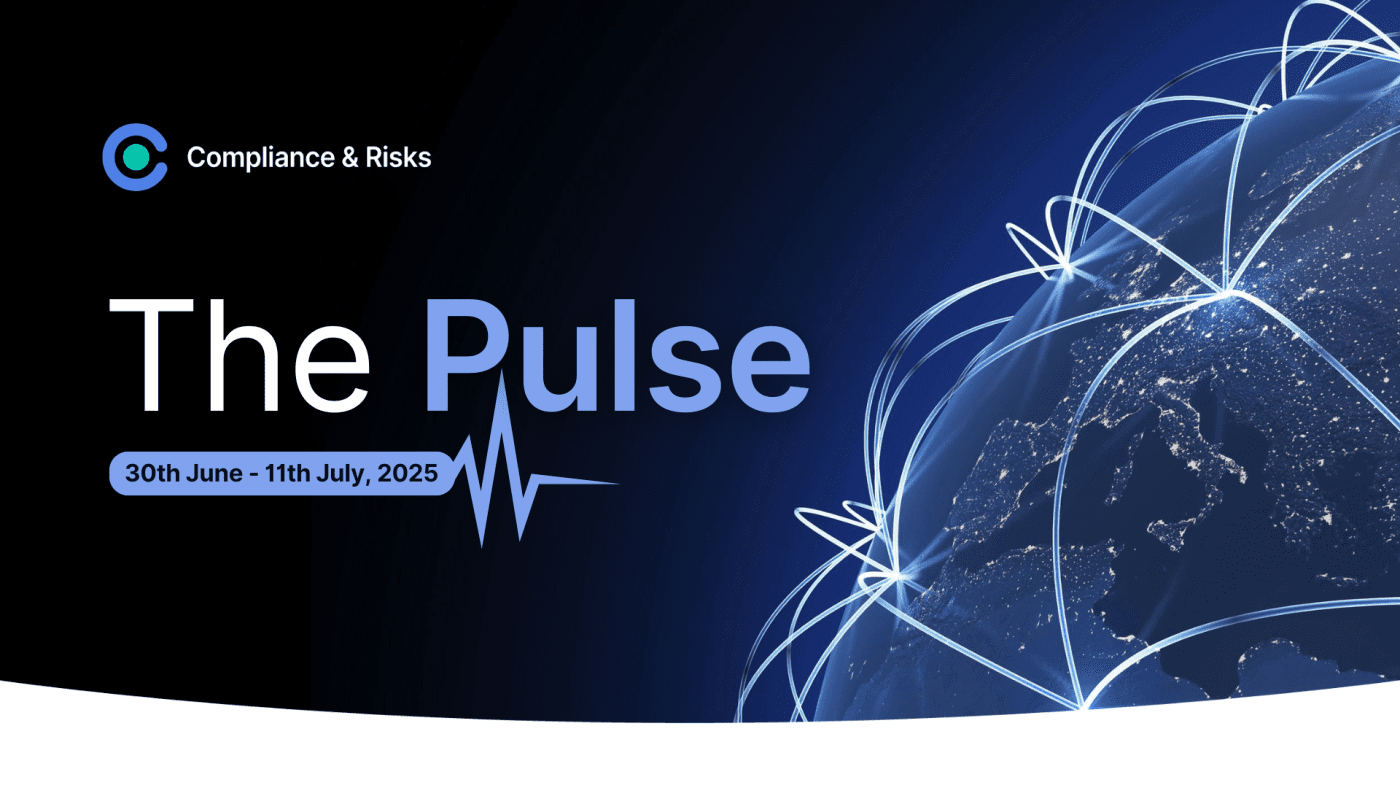
The Pulse was originally posted on 16th July, 2025. Further regulatory developments may have occurred after publication. To keep up-to-date with the latest compliance news, sign up to our newsletter.
Check out the latest 2025 Regulatory Compliance Updates with The Pulse, your biweekly source for global regulatory insights!
This Week’s Trending Sources in C2P
- Global Battery & Sustainability Regulatory Trends: What’s Changing & Why It Matters, Webinar Presentation, June 2025
- Canada: Proposed Content of the Guide for Phase 2 Reporting to the Federal Plastics Registry, Consultation Document, June 2025
- Key Radio Equipment Takeaways from REDCA 2025, Blog, June 2025
What is Our Content Team Talking About?
EFRAG Plans to Reduce ESRS Data Points by 66% (Unapproved Working Document)
by Hannah Janknecht, Regulatory Compliance Specialist
Update: EFRAG TEG (Technical Expert Group) has adopted the exposure draft on in its meeting on 10 July 2025. The draft will now be discussed by EFRAG’s board on 25 July 2025.
In an unapproved working document, published in a meeting note on 10 July 2025, EFRAG explains it plans to reduce the current ESRS by approximately 66 %. The meeting note is accompanied by a document setting out acronyms and terms to be used in the new ESRS version, and preliminary suggestion for the revision of each ESRS.
It should be noted that the working document only serves as a basis for discussion at EFRAG’s meeting on 10 July, and it does not yet constitute EFRAGs final position on the ESRS revision.
In the cover note, EFRAG explains that many of the data points were seen as too granular, and could either be deleted or moved to non-binding guidance, while still achieving high-quality ‘core’ information.
What’s Changing?
The following core changes are envisaged:
- Drastic reduction of ‘shall’ data points (in excess of 50 %). This shall be achieved by eliminating the least relevant data points, using a principle-based and narrative-based approach. Some more granular data points are furthermore moved to non-binding guidance documents.
- Elimination of all ‘may’ data points (277 data points in IG 3). Only a handful will potentially be maintained for less mature disclosures.
In addition, the document contains 6 levers that explain EFRAG’s overall approach to simplification:
- Lever 1: Simplification of the Double Materiality Assessment (DMA). A new section focusing on the “practical considerations” in the execution of the DMA shall be introduced in ESRS 1. In addition, it shall be explicitly allowed to add non-material information to sustainability statements. The list of topics in ESRS A16 are streamlined.
- Lever 2: Better readability / conciseness of the sustainability statements and better inclusion in corporate reporting as a whole. This includes the option to have an ‘executive summary’ at the beginning of the sustainability statement, the option to use appendices for more granular information and clarifications on the concept of connected information.
- Lever 3: Critical modification of the relationship between Minimum Disclosure Requirements (MDR) and topical specifications. This includes maintaining cross-cutting MDRs at the ESRS 2 level in terms of ‘shall’ under a revised/reduced number of data points and drastically reducing the mandatory PAT specifications (‘shall data points’) in the topical standards to the strictly essential ones. The same approach shall be used for the topical specifications of ESRS 2. ‘PATs’ are only to be reported ‘if you have’ them.
- Lever 4: Improved understandability, clarity and accessibility of the standards. Elimination of “voluntary disclosure” sections. Clearly separating mandatory and non-mandatory content.
- Lever 5: Introduction of other suggested burden-reduction reliefs. This includes IFRS reliefs (i.e. broad use of ‘undue cost and effort’ for materiality assessment and the disclosure of ranges for quantitative financial effects, but NOT including scope 3 emission reliefs), and additional CSRD specific reliefs.
- Lever 6: Enhanced interoperability, in particular with IFRS S1 and S2.
What’s Next?
An EFRAG SRB meeting is scheduled for 25 July 2025 to conclude on the Exposure draft and the accompanying documents. After the deadline for EFRAG to deliver the ESRS drafts to the EU Commission has been moved from 31 October to 30 November, the public consultation on the exposure drafts is now envisaged to take place from the end of July until the end of September 2025 (60 days instead of the 30-45 days as previously planned).
What Are Our Knowledge Partners Talking About?
US State PFAS Requirements are Continuing to Develop and Emerge
by RINA
With the Toxic Substances Control Act (TSCA) per- and polyfluoroalkyl substances (PFAS) reporting requirements being implemented from 13th April 2026, the US states are continuing to develop their proposals to implement requirements at a state level. The following highlight two key changes, which is indicative of the overall trend of more obligations being placed at the state level, as well as subtle difference between the requirements which are impactful to those in scope of the legislation.
Minnesota – Data Reporting and Charges
The Minnesota Pollution Control Agency is proposing a rule (i) which would introduce the requirement for reporting of PFAS to the state, with associated charges for the data submission. The data required includes a product description, product code and PFAS details (name, registry number, concentration range based on a list of options provided, function).
The proposal would introduce a $1,000 flat fee per manufacturer for submission of the initial report, $500 for annual updates, extension requests $300, and voluntary updates will not have a fee. Given that the initial reports of PFAS are required to be submitted by 1st January 2026, it is worthwhile manufacturers which are expected to have to report to include the fees in budgets, even though the exact data collection system or reporting period commencement is unknown.
New Mexico – New State Requirements
New Mexico is the latest of the US states to introduce PFAS related requirements (ii). Like other states intentionally added PFAS in certain end applications such as cookware and cleaning products will be banned from 2027 and 2028 respectively. It also introduces a comprehensive ban from 2032, unless it is described by a ‘currently unavoidable use’. PFAS reporting is also introduced from 2027, but unlike other states there are exclusions from this provision for:
- Fluoropolymers;
- Industrial products such as cooling, heating, ventilation, air conditioning and refrigeration equipment;
- Semiconductors and the materials used to manufacture them; and
- Non-consumer electronics and laboratory equipment.
References
(i) Certified Revisor Copy of the Proposed Rules (c-pfas-rule1-06)
(ii) https://www.nmlegis.gov/Sessions/25%20Regular/final/HB0212.pdf
What Are Our Clients Asking About?
Is Decision 97/129/EC the Current Mandated Labeling System in the EU?
Answered by Conor O’Donoghue, Senior Regulatory Compliance Specialist
Packaging labeling per Decision 97/129/EC has been made mandatory by some EU countries. This is outside the norm as Decision 97/129/EC was intended to be a voluntary labeling system. Countries which have made packaging labeling per Decision 97/129/EC mandatory in the EU are:
- Italy
- Luxembourg
- Malta
- Bulgaria
Furthermore, other countries have introduced national packaging labeling requirements which are not based on Decision 97/129/EC. These are:
- Spain
- France
- Portugal
It should be noted that all of these national measures will most likely be replaced by the EU’s Packaging and Packaging Waste Regulation (PPWR) which contains harmonized labeling requirements that become directly applicable in all EU member states from 12 August 2028.
Stay Ahead Of 2025 Regulatory Compliance Updates with The Pulse
Want to stay on top of 2025 Regulatory Compliance Updates?
All insights in The Pulse come directly from C2P – the trusted compliance platform used by over 300 of the world’s leading brands. With coverage across 195+ countries, C2P empowers you to achieve, maintain, and expand market access faster and with confidence.
C2P is an enterprise SaaS platform designed to meet your unique compliance needs. It brings together everything in one place – regulations, standards, requirements, and evidence – so you can manage compliance across the enterprise with ease.
Need more? Our tailored add-on packages unlock use-case-specific solutions, enriched global regulatory content, and direct access to a global team of subject matter experts and professional services.
C2P is your key to unlocking global market access.
- Accelerate time-to-market for products
- Reduce non-compliance risks that impact your ability to meet business goals and cause reputational damage
- Enable business continuity by digitizing your compliance process and building corporate memory
- Improve efficiency and enable your team to focus on business critical initiatives rather than manual tasks
- Save time with access to Compliance & Risks’ extensive Knowledge Partner network
Keep Your Finger on the Pulse of Regulatory News!
Join 30,000+ compliance professionals for 2025 regulatory compliance updates on hot compliance issues, market insights on the latest trends, and free regulatory webinars and whitepapers
